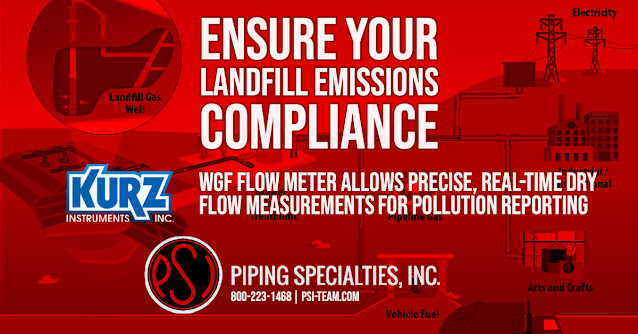Landfill gas (LFG) is a natural byproduct of organic material decomposition in landfills. LFG is approximately half methane (natural gas's primary component), half carbon dioxide (CO2), and a small amount of non-methane organic compounds. Methane is a potent greenhouse gas that traps heat in the atmosphere 28 to 36 times more effectively than CO2 over a 100-year cycle.
Landfills for municipal solid waste (MSW) are the third-largest source of human-related methane pollution in the United States, accounting for around 15.1 percent of total emissions in 2018.
LFG can be captured, transformed, and used as a renewable energy resource instead of escaping into the air. Using LFG reduces odors and other risks associated with LFG emissions and methane migration into the atmosphere, which contributes to local smog and global climate change.
A collection of wells and a blower/flare (or vacuum) device remove LFG from landfills. The collected gas moves to a central location where it can be stored and handled, depending on the gas's ultimate use. The gas can be flared or put to good use in an LFG energy project from here.
Because of regulatory requirements, numerous landfills install gas control controls. The federal government has adopted legislation that regulates the use and upkeep of landfills. These rules help eliminate ozone precursors (volatile organic compounds and nitrogen oxides), methane, NMOCs, and odorous compounds in landfill gas pollution, which harms human health and the environment.
Thermal flow meter technology is known for having a low-pressure drop and is suitable for calculating extremely low flows. On the other hand, standard thermal flow meters do not operate well in condensing gas environments like landfill methane recovery systems. The accuracy issues associated with wet gas flow measurements grow by the unpredictability of moisture levels caused by leachate, rain, temperature, and humidity.
The Kurz WGF flow meter is perfect for use in wet gas applications. Kurz allows you to quantify gas flow precisely and provide real-time dry flow measurements for pollution reporting (federal, state, local regulations, greenhouse gases, and the Landfill Methane Rule).
For more information about Kurz flow meters in New England, contact Piping Specialties, Inc. Call them at 800-223-1468 or visit their website at https://psi-team.com.




